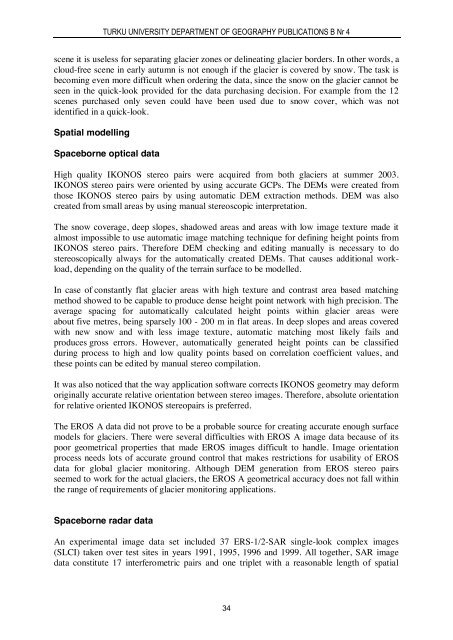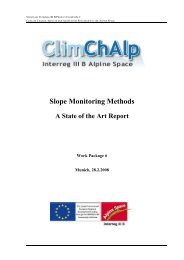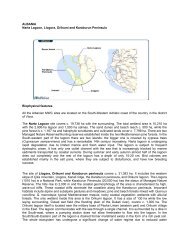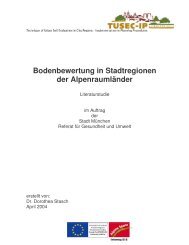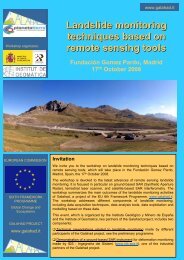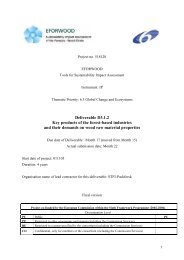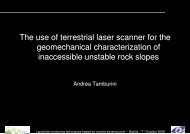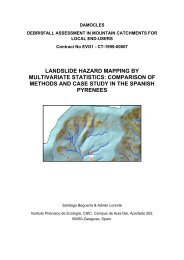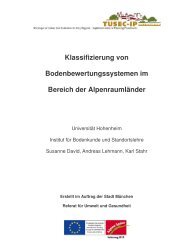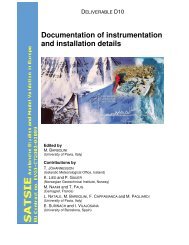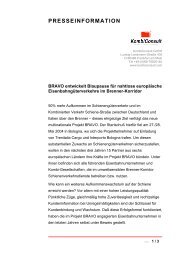1 Background - mountain.PROJECTS
1 Background - mountain.PROJECTS
1 Background - mountain.PROJECTS
You also want an ePaper? Increase the reach of your titles
YUMPU automatically turns print PDFs into web optimized ePapers that Google loves.
TURKU UNIVERSITY DEPARTMENT OF GEOGRAPHY PUBLICATIONS B Nr 4scene it is useless for separating glacier zones or delineating glacier borders. In other words, acloud-free scene in early autumn is not enough if the glacier is covered by snow. The task isbecoming even more difficult when ordering the data, since the snow on the glacier cannot beseen in the quick-look provided for the data purchasing decision. For example from the 12scenes purchased only seven could have been used due to snow cover, which was notidentified in a quick-look.Spatial modellingSpaceborne optical dataHigh quality IKONOS stereo pairs were acquired from both glaciers at summer 2003.IKONOS stereo pairs were oriented by using accurate GCPs. The DEMs were created fromthose IKONOS stereo pairs by using automatic DEM extraction methods. DEM was alsocreated from small areas by using manual stereoscopic interpretation.The snow coverage, deep slopes, shadowed areas and areas with low image texture made italmost impossible to use automatic image matching technique for defining height points fromIKONOS stereo pairs. Therefore DEM checking and editing manually is necessary to dostereoscopically always for the automatically created DEMs. That causes additional workload,depending on the quality of the terrain surface to be modelled.In case of constantly flat glacier areas with high texture and contrast area based matchingmethod showed to be capable to produce dense height point network with high precision. Theaverage spacing for automatically calculated height points within glacier areas wereabout five metres, being sparsely 100 - 200 m in flat areas. In deep slopes and areas coveredwith new snow and with less image texture, automatic matching most likely fails andproduces gross errors. However, automatically generated height points can be classifiedduring process to high and low quality points based on correlation coefficient values, andthese points can be edited by manual stereo compilation.It was also noticed that the way application software corrects IKONOS geometry may deformoriginally accurate relative orientation between stereo images. Therefore, absolute orientationfor relative oriented IKONOS stereopairs is preferred.The EROS A data did not prove to be a probable source for creating accurate enough surfacemodels for glaciers. There were several difficulties with EROS A image data because of itspoor geometrical properties that made EROS images difficult to handle. Image orientationprocess needs lots of accurate ground control that makes restrictions for usability of EROSdata for global glacier monitoring. Although DEM generation from EROS stereo pairsseemed to work for the actual glaciers, the EROS A geometrical accuracy does not fall withinthe range of requirements of glacier monitoring applications.Spaceborne radar dataAn experimental image data set included 37 ERS-1/2-SAR single-look complex images(SLCI) taken over test sites in years 1991, 1995, 1996 and 1999. All together, SAR imagedata constitute 17 interferometric pairs and one triplet with a reasonable length of spatial34


